The Eighth Original Writing Competition
Primary School Group
Platinum Award
Written by Li Yutong,
Bazhong Normal Affiliated Experimental Elementary School, Sichuan Province
Date: October, 2020
I cross Qifeng Bridge in the early hours of morning, under autumn rains and a blustery wind. Pulling my jacket closely in around me, I quicken my pace toward the old town.
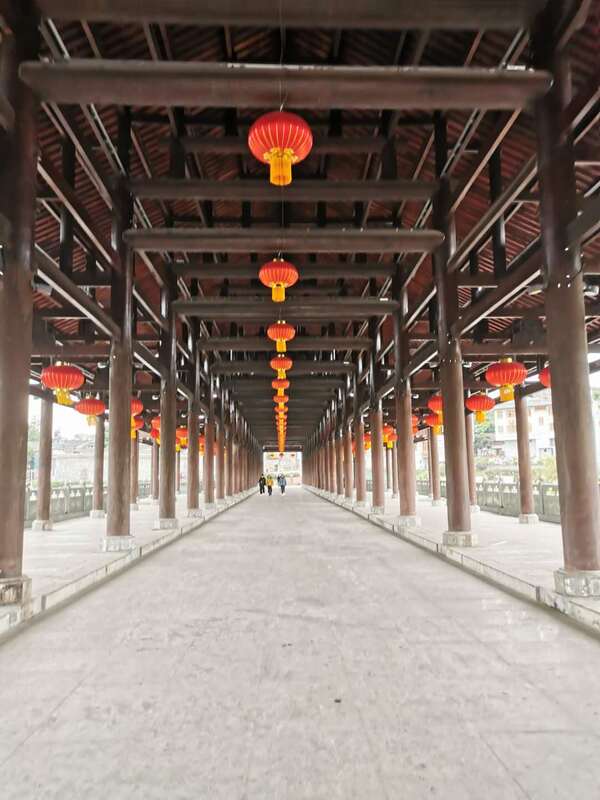
At the far end of the bridge, I buy a skewer of candied haws. Their sweet goodness instantly refreshes my spirits and takes the sting off the chilly autumn wind.
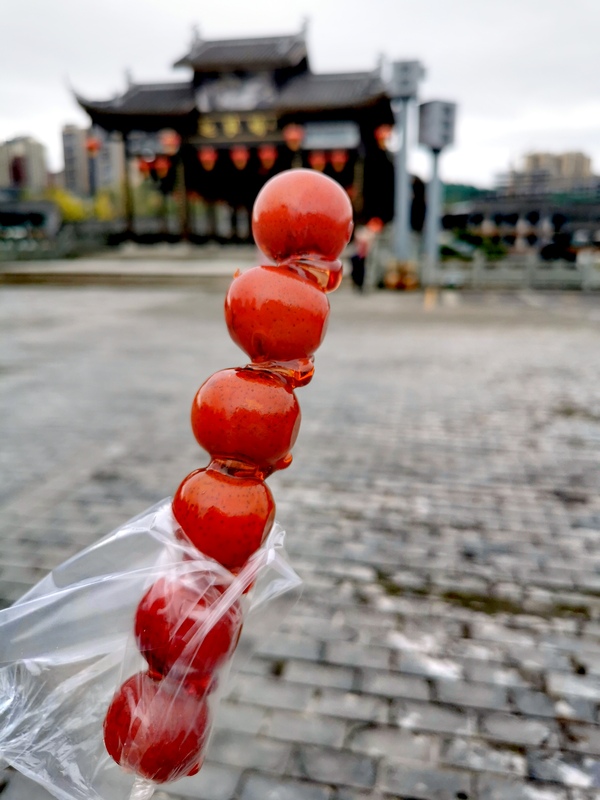
The rains of recent days have scoured the blue-grey cobble that lines the narrow streets of this old town, giving the scene an unusually pristine air. The various mosses here each seems to have its own, unique story to tell. The timeworn indentations that punctuate the spaces between cobbles and pockmark their surfaces cradle rainwater that reflects crisply the overarching blue sky. What a charming old town street scene!
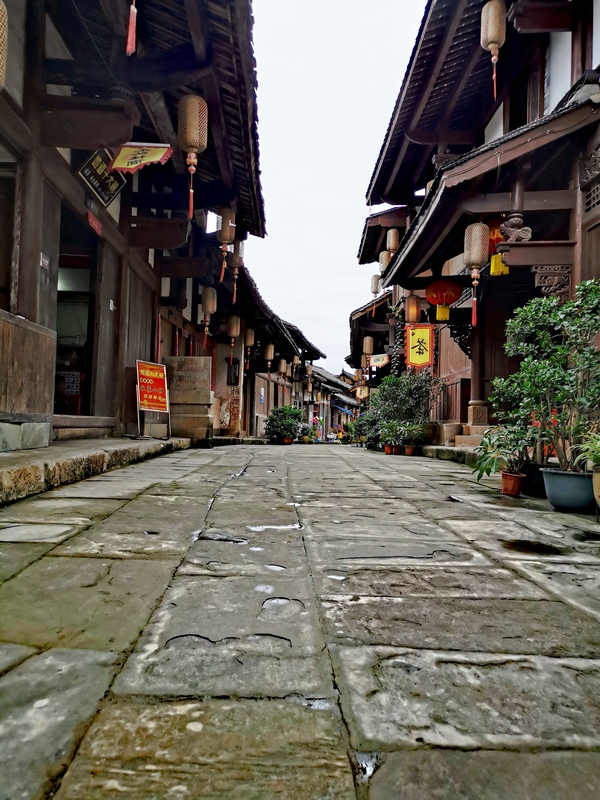
The industrious people here keep their cobbled roads spotlessly clean with bamboo brooms. The town wafts with the familiar smells of dampness.

I walk upward through the town. The venerable age of the wooden homes with blue-grey tiles and red doors that line the street is readily apparent. The lustrous crimson hues in the lanterns lining this street have long faded as well.

The few renovated traditional homes I encounter along the way shine bright with historical charm, enticing me in to explore their stories, both past and present.
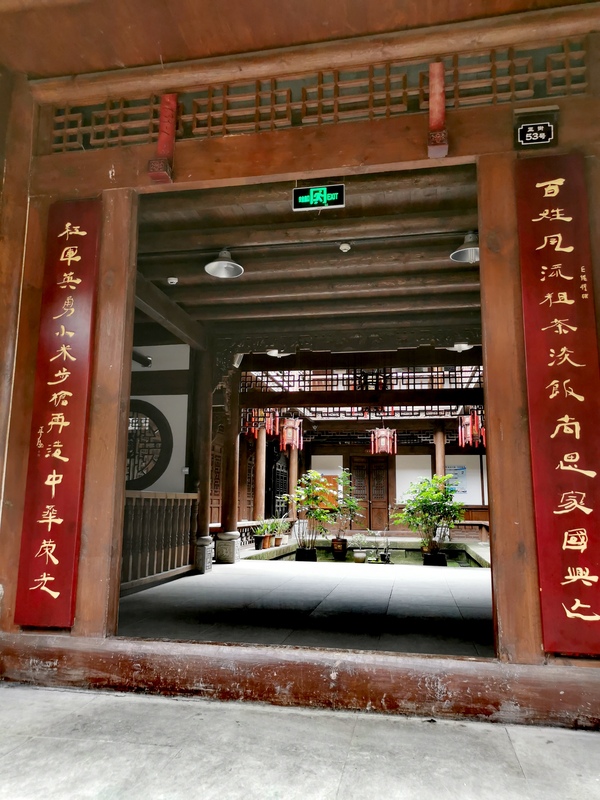
Newly bloomed camellia flowers reach upward, straining to better hear the happy chatter flowing out of wood-framed windows from the rooms inside.
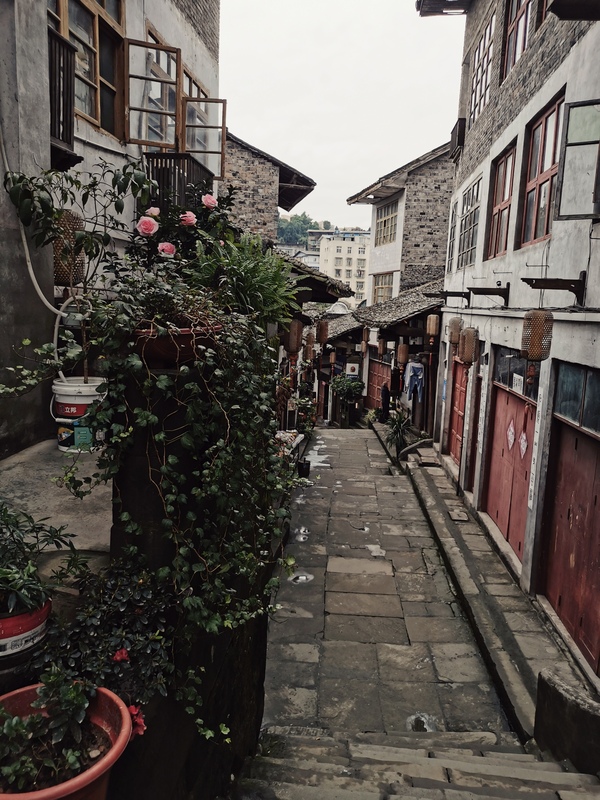
Sesame titang cakes, brown-sugar mahua, sesame bars, and puffed rice treats … all pale in comparison to the pressed tofu and preserved soya beans that hang in woven rice-straw bags from the eaves of homes here.
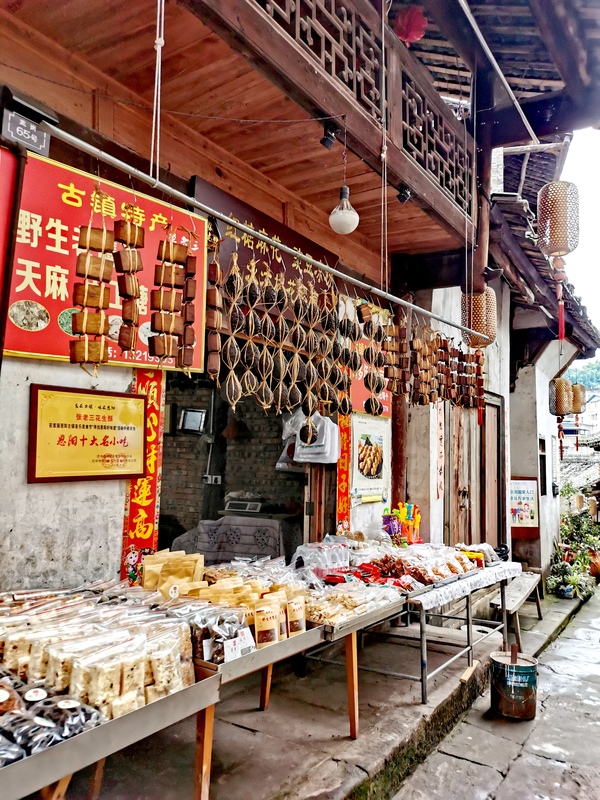
The town’s famous restaurant, Shidawan, is the busiest place on this street, serving up an enticing menu of signature dishes including lunchmeat soup (daokou wanzi), crispy pork soup (shuisu rou), crisp fatty pork (tuozi rou), fried fish, dried longan fruit, and dried baby shrimp soup.
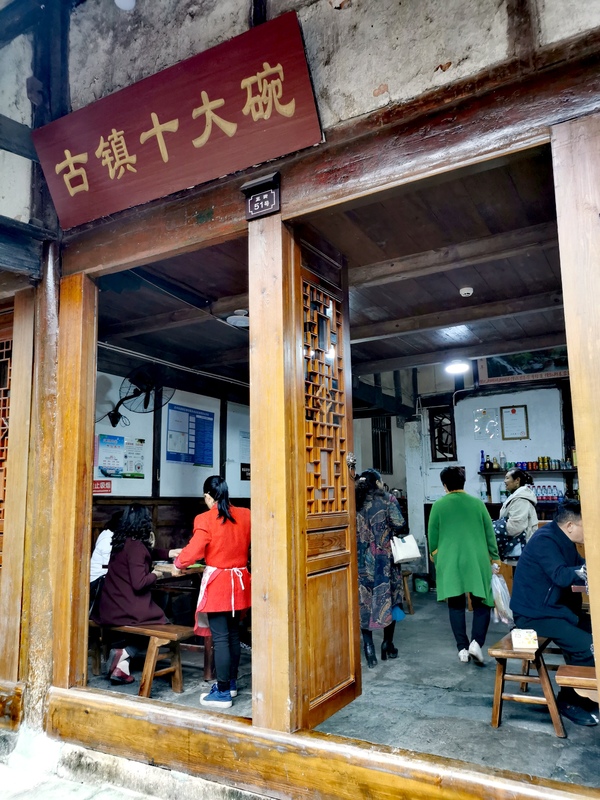
Despite its popularity, even with visitors to the town, this isn’t my favorite place to eat.
Look! Tonight’s main dish, spicy hotpot, has arrived!
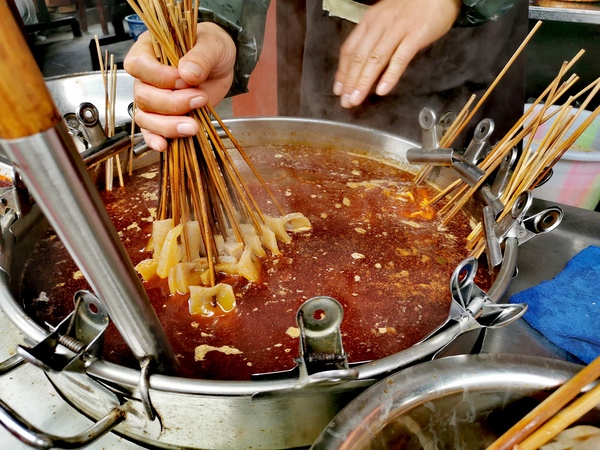
The cabinet is filled with a well-organized variety of dishes to choose from. Their wooden place markers wait anxiously for us to make up our minds.
A large pot brims with a plethora of ingredients that have been slowly cooked into a buttery rich, red broth. Its unmistakable aroma wafts far and wide through these streets in search of hungry souls to tempt. The complex of smells engage the olfactories, excite the palate, and cannot but send all within range running in to grab a table.
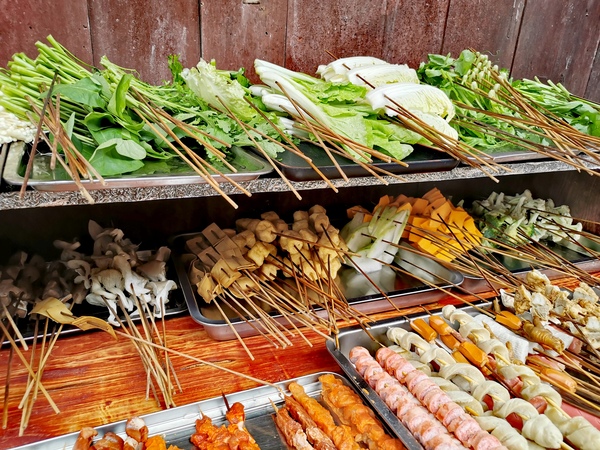
Spicy Sichuan pepper oil gleams in the pot of boiling soup, where hungry guests simmer a panoply of foods in preparation for a truly delicious meal.
Mom tells me that spicy hotpot has been popular since she was a child and was a particular favorite of cash-strapped students who, back then, could easily afford 4~5 servings of hotpot-marinated items every day.
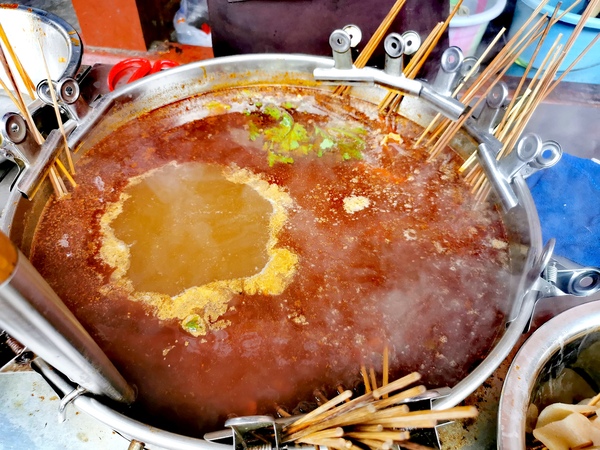
The owner draws skewer after skewer of marinated delicacies from the pot, placing them all into a pan already waiting with the restaurant’s signature spicy sauce made with a generous portion of garlic water, chili oil, powdered Sichuan peppercorn, and MSG. I of course brush on more spices from the condiments table, tempted add all of them to my feast. There’s no time for squeamishness about the level of spicy intensity here! My food drips with fire-alarm-red oil. This is heaven, indeed!
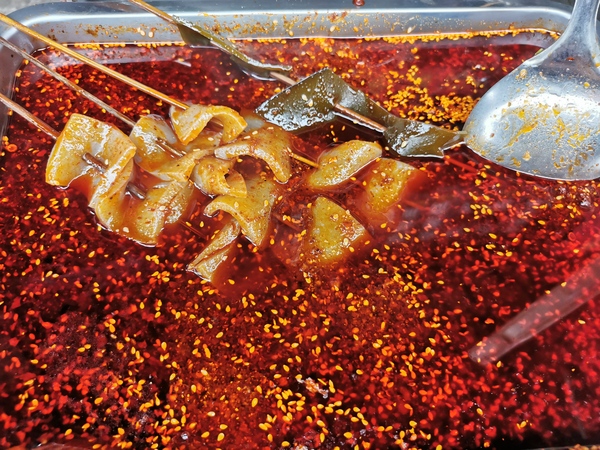
With both my hands full, I bend down and, turning my head sideways, bite down on spicy marinated seaweed, lotus root slices, and konjac. From my mouth, crunching with delight, I happily proclaim … ‘It’s not hot! It’s not hot!’

Today, our entire family is making the rounds in this town again for more, delicious hot pot delicacies. Mom says she feels like she did during her student days. The flavors are just like what she remembers - the flavors of her childhood!

This reminds me of something I once heard on the television show “A Bite of China”. One’s passion for food is in large part a longing for ‘home’. It is nostalgia. It is love for the flavors fondly remembered from childhood.
After I grow up, I suppose my memories of these flavors will be similarly cherished!
‘Old grandmother, walking up these alley steps, I’m sure this town has your favorite, cherished flavors as well!’

Each town has its own culture, traditions, and cuisine. The tastes of the mountains, the winds, and time slowly ferment together, leaving us unable to separate flavor from nostalgia.
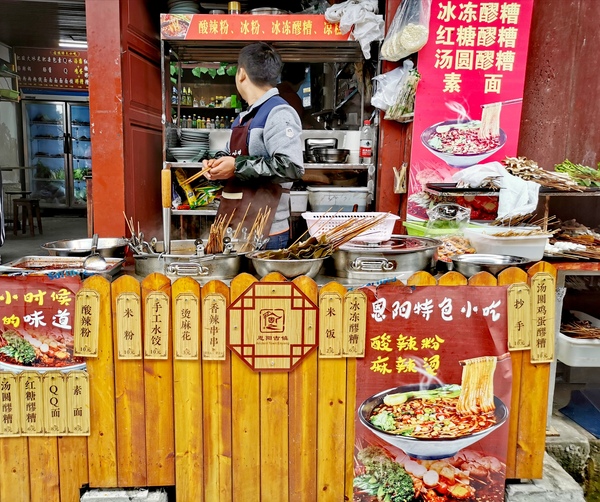
The hot pot marinade culture of my hometown has evolved and renewed itself through the ages, and the progress of food culture here reflects the vitality and industriousness of its people. The lowly bamboo skewer brings delicious flavors together every day and continues to convey the culinary traditions of my hometown down through the generations.
Reviewer 1
- The nostalgia-laced, old cobbled lanes in this ancient town are quiet and lovely after an autumn rain. Wood-framed homes with red doors and black tiles line the lane show their venerable age. Even the once-brilliant crimson in the lanterns hung outside has faded. However, it is the distinctive flavors of the Sichuan spicy hotpot that predominates in this author’s mind – it is the flavor of childhood! Delicious foods are strung on bamboo skewers and slowly cooked in a spicy, oily sauce that leaves each dripping in fiery red lusciousness that satisfies the palate. The lowly bamboo skewer has conveyed hometown culinary traditions for generations.
- The author clearly holds a deep passion for hometown flavors. Reading this leaves a pleasant taste on the palate!
Reviewer 2
The author gracefully describes her hometown, Enyang, with genuine affection. The narrative perfectly captures details of the moment, from the cobblestone alleys to the town’s simple residents. In addition to spicy hotpot, the author describes the Shidawan restaurant and local sweet treats. The narrative reflects an insightful perspective on this old town and is written in a way that grabs and holds the reader’s attention. The somewhat slow opening of the narrative in this essay is, however, unfortunate.
